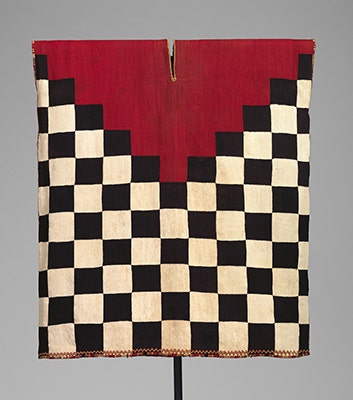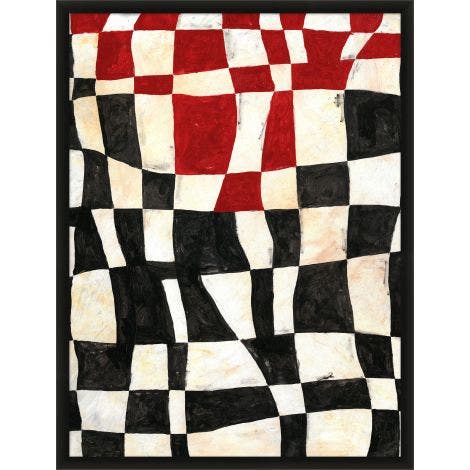Local Storage seems to be disabled in your browser.
For the best experience on our site, be sure to turn on Local Storage in your browser.
Angular Disarray

This Met x Wendover Art Group design draws inspiration from an original work of art in
The Metropolitan Museum of Art collection.
Our inspiration: Tunic
Inca artist(s)
Camelid fiber, 1400–1535 CE
Purchase, Fletcher Fund, Claudia Quentin Gift,
and Harris Brisbane Dick Fund, 2017 2017.674
Worn by men over a loincloth, such garments were one of the primary markers of identity in the Inca empire. Cloth was of profound importance in Inca culture: no political, military, social, or religious event among the Inca was complete without textiles being exchanged or gifted, burned, or sacrificed. Fine tapestry-woven tunics would have been bestowed on warriors who distinguished themselves on the battlefield, or given as diplomatic gifts by Inca rulers in their campaigns to expand their vast empire.

This Met x Wendover Art Group design draws inspiration from an original work of art in
The Metropolitan Museum of Art collection.
Our inspiration: Tunic
Inca artist(s)
Camelid fiber, 1400–1535 CE
Purchase, Fletcher Fund, Claudia Quentin Gift,
and Harris Brisbane Dick Fund, 2017 2017.674
Worn by men over a loincloth, such garments were one of the primary markers of identity in the Inca empire. Cloth was of profound importance in Inca culture: no political, military, social, or religious event among the Inca was complete without textiles being exchanged or gifted, burned, or sacrificed. Fine tapestry-woven tunics would have been bestowed on warriors who distinguished themselves on the battlefield, or given as diplomatic gifts by Inca rulers in their campaigns to expand their vast empire.



